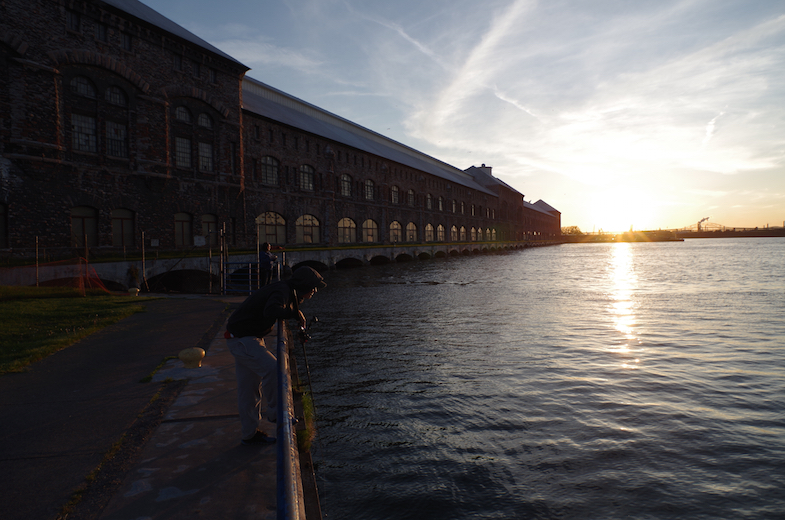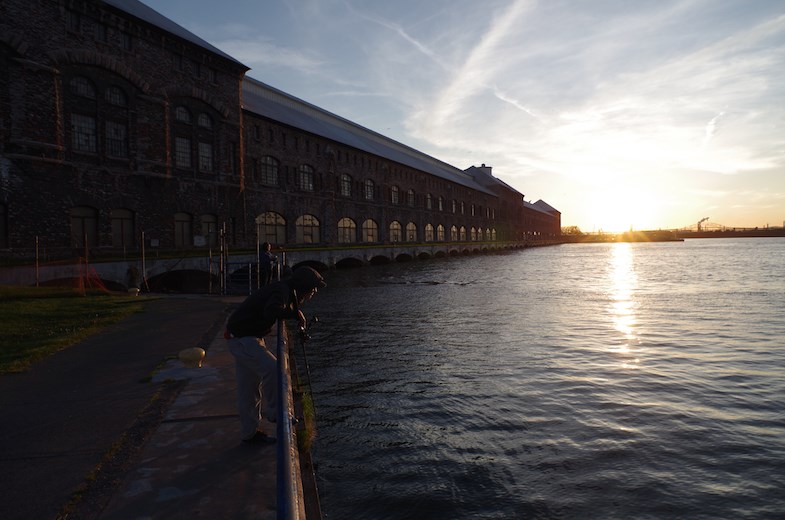If you’ve ever reeled in an Atlantic salmon, you probably have Lake Superior State University to thank.
At least you do if you do your fishing around these parts.
All the Atlantic salmon in the upper Great Lakes (Superior, Michigan, Huron) can trace their roots back to an egg that came from LSSU’s Aquatic Research Lab, which each year raises and releases tens of thousands of tiny yearling fish into the St. Marys River.
“Which is pretty cool to think about. We’ve had charter fishermen out of Chicago that will send a picture of an Atlantic salmon they’ve caught and that came from our students raising them up here,” said Ashley Moerke, a biology professor at LSSU and co-director of the lab.
Tuesday night, under cover of darkness, Moerke and a team of LSSU staff and students released an estimated 29,800 fish.
It’s an annual event, complete with a graduation speech from the university’s president and a celebratory eating of cake (by the guests, not the fish) before the salmon are sucked from their raceways down tubes that lead directly to the St. Marys River.
It’s a big night for the students too. The purpose of the lab and the fish stocking program is to give the undergraduate fish and wildlife students some hands-on experience with fish culture and rearing, and also in fish disease, water quality, fish physiology.
As fish stocking programs go it’s a small one - government programs stock fish by the million - so its purpose is largely educational.
As a byproduct, the program keeps the upper lakes reliably stocked with a sport fish that, while not native to the upper lakes, is popular among anglers.
Moerke said the yearlings will spend a few weeks to a couple of months in the St. Marys before moving on to Lakes Huron and Michigan.
In the fall they return, drawn to the waters were they were hatched.
“Last year, we had boats that had six fishers in the water and they were limiting out every day,” said Moerke. “If you’re here later summer/early fall and if you’re in the lower river, there’s a good chance you’ll be catching one.”
The fish are, on average, about six inches in length when they’re released, but they don’t stay that small for long.
“It takes about 10 fish to make a pound. They’re pretty small fish, but in (one or two years) they’ll come back and they’re anywhere between six and 12 pounds,” said Moerke. “They grow tremendously when they go out in Lake Huron and put on a lot of weight.”
It’s when the salmon return to the St. Marys River in the fall that the LSSU students go out and catch them to harvest eggs to produce the next batch of fish that are then released in another year and a half.
“It’s basically a self-sustaining process, which is really cool,” she said

Being located there - essentially over the river, where the fish can go from the raceways where they are grown directly into the wild - gives LSSU a major advantage compared to other fish-rearing operations that often have to truck fish to the locations where the will be released.
The lab could be on the verge of a massive expansion.
Michigan’s governor has recommended that next year’s state budget include partial funding for a $12-million expansion to the Aquatic Research Lab that Thomas Pleger, LSSU’s president, said would be a major development for the university and the program.
“By expanding our facility we can handle more students, we can do more research and scholarship,” said Pleger.
Pleger said It would also be a way to educate the public about the importance of the Great Lakes, and highlight the work LSSU is doing in areas like fish culture and invasive species research.
Watch for more on the annual Atlantic salmon release on LOCAL2.
(PHOTO: Yearling Atlantic salmon swirl down a pipe that will take them to the St. Marys River from Lake Superior State University's Aquatic Research Lab on Tuesday night. Michael Purvis/SooToday)

.JPG)